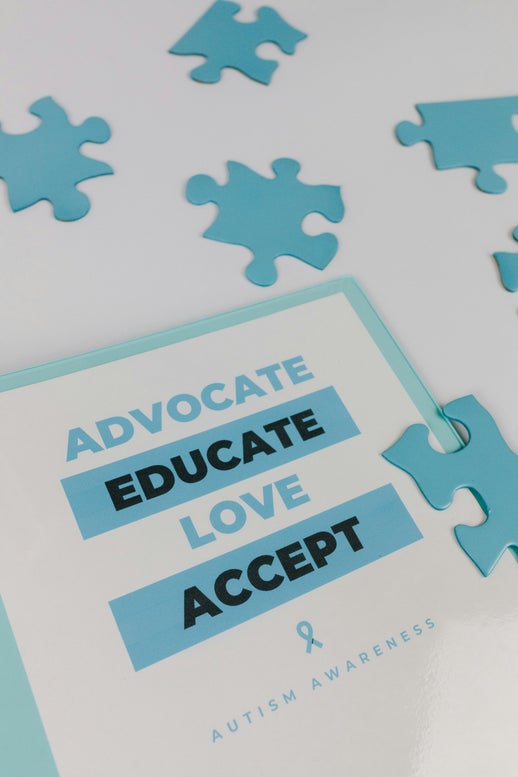By Esther Baxter
In the age of the algorithm, going viral can feel like power.
For families of children with disabilities, chronic illness, or neurodivergence, sharing glimpses of daily life online can be a way to connect with others, educate the public, and find community.
But there’s a growing trend that quietly crosses a line: when advocacy becomes exploitation - often in the name of awareness, education, or empowerment.
There is a stark difference between storytelling with a child and storytelling about a child, especially when that child cannot consent (due to age, development, or capacity to understand).
This becomes especially problematic when parents share highly personal, identifiable, and often deeply vulnerable content about their children: meltdowns, seizures, nappy changes, bathtime, nasogastric tube (NGT) insertions, and other moments that an adult would never post about themselves (let alone have someone else post without their permission).
And yet, this happens daily.
Content like this often gains traction quickly. It’s raw, emotional, and confronting. People respond with sympathy, admiration, and viral shares. The parent, is congratulated.
They're so resilient.
They're a supermum.
The intention may be to show the hard truths of parenting a disabled or medically complex child, but the result is often something else entirely: an erasure of the child’s right to privacy, dignity, and future autonomy.
The Long-Term Impacts on Children:
Children, particularly those with disabilities or chronic illness, are already vulnerable to exclusion, bullying, and misunderstanding.
When footage of them during a seizure, in pain, or struggling to communicate is shared online, complete with names, diagnoses, and context (the internet never forgets). These moments become part of their digital footprint forever.
Research shows that a child’s digital identity can be formed before they’re even old enough to speak. A 2018 report by the Children’s Commissioner for England found that the average parent shares nearly 1,500 images of their child before the age of five (1). That’s an alarming number of opportunities for a child’s dignity to be compromised, especially when those images are tied to emotional or physical vulnerability.
A 2022 study published in Media and Communication explored the concept of “sharenting,” a term developed to describe the oversharing of children’s lives by parents on social media.
The study found that children whose images and experiences were shared publicly without their input often felt violated and mistrustful later in life (2).
Many expressed a desire to have been asked, to have had the opportunity to say no, or to have had their lives kept private until they could choose what, and when, to share.
Erosion of the Parent-Child Relationship:
Parents are meant to be their child’s greatest protector. When children grow up to discover that moments they found distressing, embarrassing or sacred were posted online for strangers to comment on (or worse, that their parent monetised this content), what does that do to their trust?
This becomes even more complicated for children with disabilities or communication barriers.
The assumption that they don’t mind, won’t understand, or “won’t be able to tell me anyway” is a dangerous, dehumanising one.
It reinforces the ableist belief that children who can’t verbalise consent don’t deserve the same respect as those who can.
Even the most loving parent can unintentionally cause harm by placing advocacy or community validation above their child’s long-term well-being.
When a meltdown is filmed rather than comforted through, when an NGT change is broadcast instead of made private, or when a child’s trauma is used to drive engagement, however well-meaning, it can rupture the sense of safety and dignity a child deserves.
A Permanent Digital Footprint
In a world where employers, schools, and even potential partners conduct online searches, everyone's digital history matters.
Children with disabilities already face stigma, misunderstanding, social isolation, and discrimination. Adding viral content of them in medical or emotional crisis to the mix does not help create a more inclusive world, it risks further alienation.
The internet is not a digital scrapbook.
It is not private.
It is not forgetful.
Once an image or video is out there, it is almost impossible to erase. Screenshots are taken. Content is re-uploaded. It can be used out of context, misrepresented, or turned into memes. AI can be used to create deep fake CSAM (child sexual abuse material).
And children, who grow up, form identities, and eventually take ownership of their own stories… Well, they may find that the narrative has already been written for them.
Autonomy is the Heart of Advocacy
True advocacy does not speak over the people it seeks to support. It centres and amplifies their voices, respects their agency, and protects their dignity.
Especially when they are too young, too sick, or too vulnerable to do it for themselves.
There are ways to share educational or advocacy content that protects a child’s autonomy:
- Use your own story rather than theirs.
- Anonymise details where possible.
- Avoid faces, ages and names unless the child is old enough and able to give informed consent.
- Ask, “Would I be comfortable if this were me?”
- Consult disabled adults about how they wish their stories had been handled as children.
Parents are allowed to seek support. They’re allowed to vent, grieve, and educate.
But the need for connection should never come at the cost of a child’s privacy.
We are not entitled to every moment of a child’s life just because it’s “real” or “inspirational.” Children are not props for advocacy, fodder for content, or symbols of parental resilience and bravery.
They are people.
And they deserve better.
Sources:
- Children's Commissioner for England. (2018). Who Knows What About Me? https://www.childrenscommissioner.gov.uk/report/who-knows-what-about-me/
- Blum-Ross, A., & Livingstone, S. (2022). "Sharenting, parenting and the rights of the child." Media and Communication, 10(1), 68–77. https://doi.org/10.17645/mac.v10i1.4826
- Office of the eSafety Commissioner (Australia). (2023). Sharenting and Your Child’s Privacy. https://www.esafety.gov.au/parents/skills-advice/sharenting
- Livingstone, S., & Third, A. (2017). Children and young people’s rights in the digital
age. New Media & Society, 19(5), 657–670. https://doi.org/10.1177/1461444816686318
© 2025 Esther Baxter
